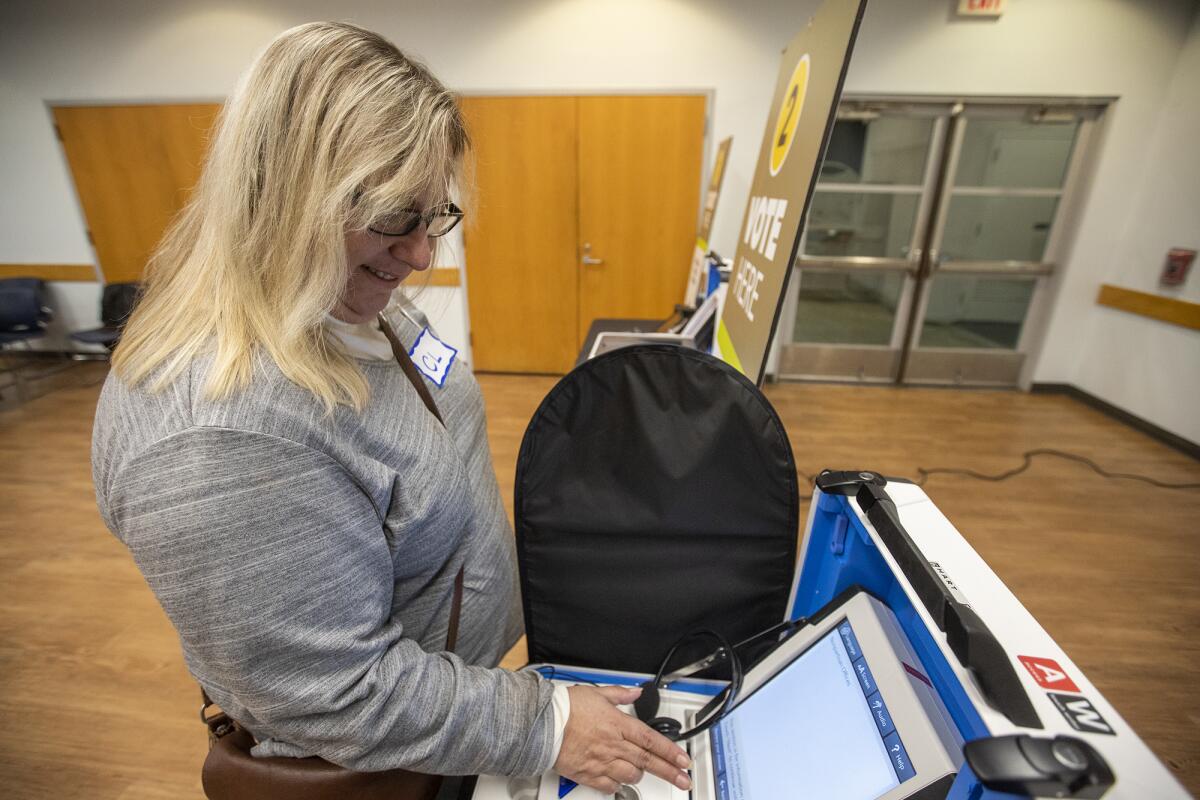Believe it or not, you can start voting next week in California’s primary election

Did you know you can start voting for president next week?
It’s the goal of the Orange County registrar of voters office and local political organizations to let people know they can mark their primary election decision right from the comfort of home.
“We’ve been talking about this for years,” Justin Berardino, operations manager for the registrar’s office, said at an informational event presented by the Costa Mesa Democrats on Wednesday evening at the Costa Mesa Senior Center. “Here we are on the doorstep.”
Registrar of voters offices across the state have rolled out several changes toward their goal of making voting easier, more accessible and more secure ahead of the 2020 elections. The changes are a result of the state Voter’s Choice Act, passed in 2016 with the intent to “modernize elections in California by allowing counties to conduct elections under a new model which provides greater flexibility and convenience for voters.”
The biggest change is that California’s primary election has been moved to March 3 to join other states participating in “Super Tuesday.”
All registered voters in Orange County will get an official vote-by-mail ballot and voter information guide at their homes beginning Monday. The ballots can be returned by mail or deposited any time at 110 secure ballot boxes throughout the county.
They also can be dropped off at one of 188 vote centers countywide. Some vote centers will open Feb. 22, others will be available starting Feb. 29.
To find the nearest vote center or ballot drop box, visit ocvote.com.
The vote centers — which replace traditional polling places, where voters had to visit specific precincts — will be open to all county voters, including on the Saturday and Sunday before Election Day.
“You can do everything you’d be able to do at our office at a vote center,” Berardino said. That includes same-day voter registration, receiving replacement ballots and updating addresses.
Those who vote by mail will have their signatures vetted by a signature checking team, he said.

Kalvin Alvarez, 19, a student at Orange Coast College in Costa Mesa, said he often informs voters about the changes while he canvasses for local politicians.
“A lot of people don’t know there’s an election coming up on March 3,” Alvarez said. “They’re like, ‘Hey, I didn’t know that — what happened to June 5?’”
Berardino insists the new system is not only easier but also more secure than traditional voting.
For instance, he said, in the previous system, polling places were equipped with a paper roster of all registered voters in the precinct. Now, the poll book has gone electronic. Poll workers— who now will be trained employees of the registrar’s office instead of volunteers from the community — will be able to look up voters in an electronic database.
Despite the electronics, the new vote center system is paper-based: A voter checks in at a center, receives a printed paper ballot, checks off the desired votes and then submits the paper to a vote scanner. Disabled-accessible electronic voting machines also are available.
All ballot boxes will have tamper-proof seals, Berardino said. More than one employee will go to pick up ballots at random times of day.
The registrar’s office also has partnered with CalTech to design a system that will analyze the data in real time to detect any voting abnormalities.
“It’s really slick,” Berardino said.
Though turnout on Election Day is still expected to be heavier than on the days leading to it, Berardino said the lines “won’t be as bad.”
Vote tallying will begin, as usual, at 8 on Election Night.
All the latest on Orange County from Orange County.
Get our free TimesOC newsletter.
You may occasionally receive promotional content from the Daily Pilot.




